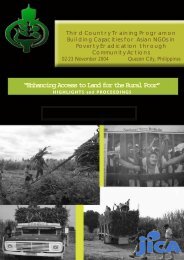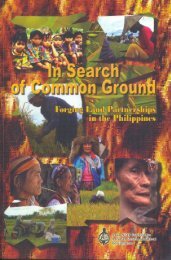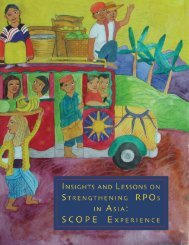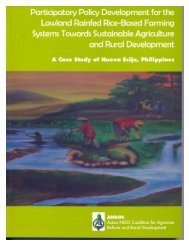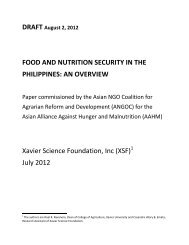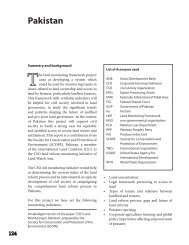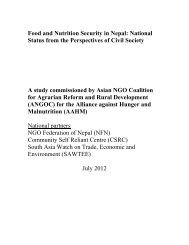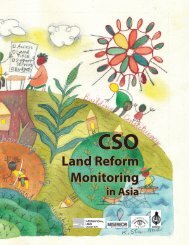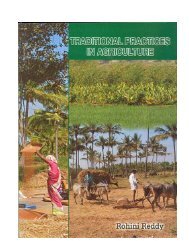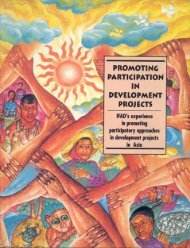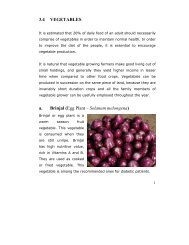Securing the Right to Land FULL - ANGOC
Securing the Right to Land FULL - ANGOC
Securing the Right to Land FULL - ANGOC
You also want an ePaper? Increase the reach of your titles
YUMPU automatically turns print PDFs into web optimized ePapers that Google loves.
A Sketch of <strong>Land</strong>lessness in<br />
Six Countries<br />
The Asian region is home <strong>to</strong> 75 percent of <strong>the</strong> world’s farming<br />
households, and about 80 percent of <strong>the</strong>se are small-scale<br />
farmers and producers. Even with figures that vary from country<br />
<strong>to</strong> country, <strong>the</strong> general trend indicates that most of <strong>the</strong>se<br />
rural poor do not have <strong>the</strong>ir own land or have <strong>to</strong>o little of it <strong>to</strong> be<br />
able <strong>to</strong> eke out a decent living. The poorest of <strong>the</strong> poor have<br />
practically no land, while those who have more are only slightly<br />
better off. In terms of sub-groups, those who bear <strong>the</strong> brunt of<br />
poverty <strong>the</strong> most are <strong>the</strong> landless, marginal farmers and tenants,<br />
adivasis or indigenous peoples, minority castes and inter-<br />
Bangladesh<br />
Cambodia<br />
Features of <strong>Land</strong>lessness<br />
THE PROLONGED STRUGGLE FOR LAND RIGHTS IN ASIA<br />
13<br />
Regional Overview of Access <strong>to</strong> <strong>Land</strong> 1<br />
Table 1. <strong>Land</strong>lessness in Six Asian Countries<br />
nally displaced persons. Rural women and female-headed<br />
households are particularly prone <strong>to</strong> acute poverty.<br />
Generally, <strong>the</strong> patterns of inequality across countries include a<br />
small fraction of landowners owning vast amounts of land. The<br />
overall land ownership patterns remain “small and highly<br />
skewed”, with high levels of inequality found in <strong>the</strong> Philippines,<br />
Indonesia and Cambodia. Large landholdings have decreased in<br />
Bangladesh and India, but this has been offset by growth in <strong>the</strong><br />
number of marginal holdings. In Nepal, more than two-thirds of<br />
peasants own less than a hectare of land, while in India a little<br />
less than half of <strong>the</strong> population owns less than 0.2 hectares of<br />
land. The number of landless or near landless persons is growing<br />
in all six countries.<br />
In 1960, 10% of households owned 37% of <strong>the</strong> country’s largest parcels of land (3 hectares and above).<br />
In 1996, 36 years later, <strong>the</strong> percentage of owners of large landholdings had dwindled <strong>to</strong> 2.1%. However,<br />
<strong>the</strong> percentage of landless households (or those owning 0–0.19 hectare) rose from 19% in 1960 <strong>to</strong> 56%<br />
in 1996.<br />
Households own an average of 0.3 hectare of land.<br />
Scarce land resource is subjected <strong>to</strong> increasing pressures by a growing population.<br />
Around 57.1% and 70.6% of households living below <strong>the</strong> lower and higher poverty lines respectively are<br />
absolutely landless. In contrast, 4.1% and 8.1% of households living below <strong>the</strong> lower and higher poverty<br />
lines respectively owned more than 3 hectares.<br />
Indigenous Peoples’ cus<strong>to</strong>mary rights <strong>to</strong> land are not recognized by government, hence <strong>the</strong>y are continually<br />
evicted.<br />
The law of inheritance is guided by personal law based on <strong>the</strong> religion of <strong>the</strong> concerned individual. As per<br />
Muslim law, women have limited rights, while as per Hindu law, <strong>the</strong>y generally receive nothing. Distribution<br />
of khas land allows joint ownership of land between husband and wife.<br />
Poverty is primarily a rural phenomenon. In 2004, 91% of <strong>the</strong> poor lived in rural areas.<br />
<strong>Land</strong>lessness is increasing. Over 20% of rural people are landless.<br />
Some 40% of households whose heads are engaged in agriculture are poor.<br />
The rate of landlessness among female-headed households is 21.2%.<br />
In 1999, 5% of landowners held close <strong>to</strong> 60% of all privately held land. By 2003, <strong>the</strong>ir share had risen <strong>to</strong><br />
70%. This means that <strong>the</strong> <strong>to</strong>p 5% of landowners are increasing <strong>the</strong>ir control of private lands by 2% per year.<br />
Farming households own an average of 1.5 hectares of land. However, 40% of households own less than<br />
0.5 hectare.<br />
ASIAN NGO COALITION FOR AGRARIAN REFORM AND RURAL DEVELOPMENT



